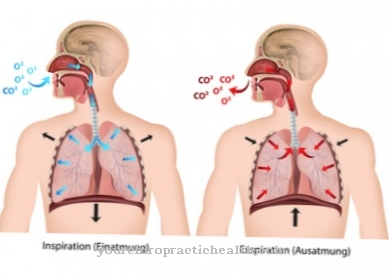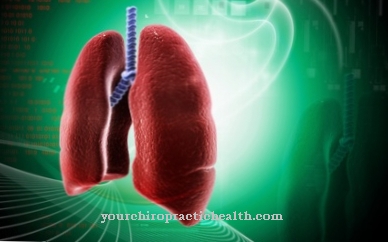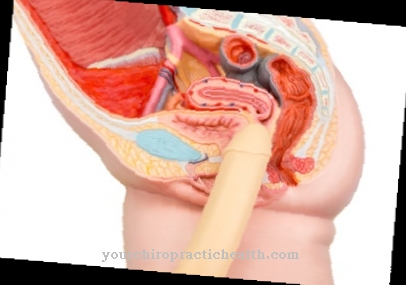The term Homeostasis comes from the Greek and means equality. It describes a process that serves to maintain a balance within dynamic systems. The internal milieu is maintained in the human body through homeostasis. Examples of homeostatic processes are thermoregulation or regulation of the blood sugar level.
What is homeostasis?

All regulatory processes in the body strive for balance. States of equilibrium are the basis for many functions of organs and for the viability of the entire organism. Homeostasis in the body is maintained by mechanisms such as control loops or redundancies. With these mechanisms the body is given the ability to self-regulate.
The goal of homeostasis can be the maintenance of equilibrium within a single cell, within a group of cells, an organ or the entire organism. The maintenance processes can relate to anatomical structures, chemical or physical processes or even to mathematical conditions such as the number of cells in a certain structure.
Function & task
In many cases, homeostasis is maintained through regulatory systems with negative feedback. First a target value is determined. This is the value that guarantees optimal conditions for safety, survival and well-being. A sensor, for example the pituitary gland or the hypothalamus, compares the current value with the target value. If a discrepancy is detected between the target value and the actual value, a regulating process starts. This typically only ends when the discrepancy between the two values has disappeared.
An example of such a negative feedback system is thermoregulation. The target value of the body temperature is usually between 36.5 and 37 ° C. The current body temperature is registered by so-called thermoreceptors, which are located in the hypothalamus in the brain. In the event of deviations from the desired temperature, the hypothalamus can initiate measures that bring the temperature in the desired direction. It can cause changes in the blood vessels to cause sweating or tremors. The hypothalamus can also induce people to dress warmer or colder, or to move from the sun to the shade.
Similar homeostasis processes exist for numerous functions of the body. When the blood sugar drops, the feeling of hunger follows relatively quickly; when the blood salt content is too high, people feel thirsty.
Sleep regulation is also based on a homeostatic process. The duration and intensity of sleep are regulated on the one hand by the circadian rhythm and on the other hand by the homeostatic sleep pressure. To a certain extent, the circadian rhythm reflects the internal clock. It ensures that we are tired at about the same time every day. The homeostatic sleep pressure, on the other hand, is dependent on previous wakefulness. The longer and more strenuous the waking phase, the higher the homeostatic sleep pressure.
One of the most important homeostases in the human body is the homeostasis of the brain. So that the milieu in the brain is always kept in balance, there is a barrier between the blood circulation and the central nervous system. This is known as the blood-brain barrier. The blood-brain barrier protects the brain from pathogens, hormones and toxins. You cannot pass this filter. Other substances such as nutrients can cross the blood-brain barrier. This maintains homeostasis in the brain.
Illnesses & ailments
Disorders of homeostasis lead to functional disorders in individual organs or even in the entire organism. Many homeostasis disorders have their origin in the hypothalamus. If central impairments occur here, the body temperature can be permanently too low or too high. Phases of fever often alternate with periods of hypothermia. For example, those affected freeze during the day and sweat so much at night that they have to change bed linen and bed linen several times.
Obesity and eating disorders are also often caused by impaired homeostasis. Researchers suspect that many diets negatively influence the regulatory system for satiety and hunger until normal regulation is no longer possible.
Disturbed sleep homeostasis causes insomnia and difficulty falling asleep.Alcohol in particular seems to play an important role in disorders of sleep homeostasis. Alcohol increases homeostatic sleep pressure, that is, the need to sleep increases. This shifts the sleep period and sleep is not as firm as usual. Alcohol, by disrupting homeostatic pressure, reduces the quality of sleep.
Blood sugar homeostasis is essential for survival. Hypoglycaemia leads to decreased brain performance, seizures, sweats and, in an emergency, shock. On the other hand, hypoglycemia is indicated by strong thirst, deeper breathing and later unconsciousness.
A disturbance in the homeostasis of blood sugar can also lead to a regulation disturbance in the pH value of the blood. The reference range of the pH value in humans is between 7.35 and 7.45. Outside these values, homeostasis is disturbed. A lower pH value is called acidosis, and a higher pH value is called alkalosis. Homeostasis of pH is maintained through the kidneys and lungs. If certain metabolic products now accumulate or the excretion capacity of the kidneys and lungs is restricted, this can lead to over-acidification or increased pH values.
A homeostasis disorder is also suspected to be the cause of Parkinson's disease. A disruption of the homeostasis of ionized calcium seems to have negative effects on the production of dopamine. In Parkinson's disease, due to a dopamine deficiency, characteristic symptoms such as muscle rigidity, muscle tremors or postural instability occur.
If the homeostasis of the brain cannot be maintained due to impairment of the blood-brain barrier, diseases such as meningitis (an inflammation of the meninges) or encephalitis (an inflammation of the brain) develop. Alcohol, nicotine and electromagnetic waves affect the blood-brain barrier and increase susceptibility to neurological diseases.













.jpg)

.jpg)
.jpg)











.jpg)